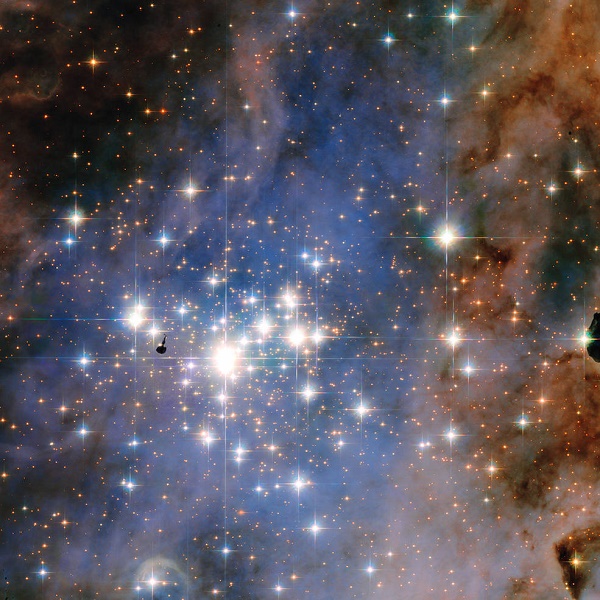By Ana Verayo, | January 23, 2016

Resembling an opulent diamond tapestry, this image from NASA’s Hubble Space Telescope shows a glittering star cluster that contains a collection of some of the brightest stars seen in our Milky Way galaxy.
The Hubble Space Telescope just revealed a literally dazzling image where thousands of stars appear to twinkle like space diamonds.
Like Us on Facebook
In this new image, Hubble captured a star cluster known as Trumpler 14 which consists of 2,000 newly formed stars, located 8,000 light years from Earth, near the core of the Carina Nebula.
According to European Space Agency officials, in this region of space hosts one of the highest concentrations of the most luminous stars in the entire Milky Way galaxy. This cluster is filled with a family of young, bright stars that emits a white-blue light. This photo was released on January 21, where Hubble is also a collaborative mission between NASA and the ESA.
ESA scientists reveal that these stars are rapidly consuming through vast stellar supplies of hydrogen which means that they only possess a few million years of lifespan before they all finally end and explode as dramatic supernovae.
Even if the Trumpler 1 cluster is just 500,000 years old, scientists say that many of its stars will get to live in a fiery, short lifespan, dying relatively young in the process, compared to the Earth's sun which is considered as a yellow dwarf, is now 4.6 billion years old.
The most brilliant star seen on this image is a supergiant known as HD 93129Aa. This massive star is 80 times bigger and 2.5 million times brighter than the sun, according to ESA scientists. Apart from this, this supergiant's surface temperatures is also one of the hottest, exceeding 90,000 degrees Fahrenheit where the sun only possesses around 10,000 degrees Fahrenheit.
HD 93129Aa also belongs to a binary system where it is orbiting a common object or stellar mass with its neighbor known as HD 93129Ab, according to ESA.
Launched more than 15 years ago, the Hubble Space Telescope is the forerunner in capturing the most stunning images of the cosmos that helped astronomers and scientists understand the evolution of our galaxy and the universe, that also revealed to the public awe inducing images of stars and cosmic objects such amazing nebulas including the Pillars of Creation or the Eagle Nebula.
-
Use of Coronavirus Pandemic Drones Raises Privacy Concerns: Drones Spread Fear, Local Officials Say

-
Coronavirus Hampers The Delivery Of Lockheed Martin F-35 Stealth Fighters For 2020

-
Instagram Speeds Up Plans to Add Account Memorialization Feature Due to COVID-19 Deaths

-
NASA: Perseverance Plans to Bring 'Mars Rock' to Earth in 2031

-
600 Dead And 3,000 In The Hospital as Iranians Believed Drinking High-Concentrations of Alcohol Can Cure The Coronavirus

-
600 Dead And 3,000 In The Hospital as Iranians Believed Drinking High-Concentrations of Alcohol Can Cure The Coronavirus

-
COVID-19: Doctors, Nurses Use Virtual Reality to Learn New Skills in Treating Coronavirus Patients







